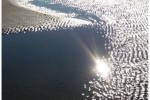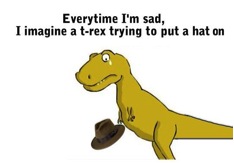Alumni Story – Dayton Dove (’03)
Read on for the Dayton’s story and some quality advice for current geology students!
Eight years on from College of Charleston I now find myself as a bona fide marine geologist, and I’m still wondering how I got here. To get started I should say that my four years studying Geology at College of Charleston were amazing, and absolutely gave me the expertise, but perhaps more importantly, the enthusiasm to pursue a career in geosciences. However, when I left CofC I was not so much thinking “I’m aggressively pursuing this or that career-path”. I was more thinking “I’ve quite liked this marine geophysics project, perhaps I could go and do more of this sort of thing”.
I realized very quickly at CofC that I enjoyed Geology (after transferring from Business at USC!). I liked taking the perspective of deep time, the historical element, the occasional detective-like aspect of the science. And I relished the concept of mapping, of visualizing natural processes occurring in 3-D, or I suppose 4-D. In particular the field course in Utah cemented my love of mapping (as I know it did for many others), and using all the tools we’d gathered up to that point from structural to paleobiology to reconstruct the geological history of a landscape. In my final year I conducted an independent study with Steve Jaume and Erin Beutel where I was introduced to marine geophysical data, and the large-scale scientific questions you could tackle with such data. I never had a huge affinity for the oceans, but before I knew it I found myself applying to grad schools, exclusively looking to study marine geology and geophysics. I was not entirely naive of my career prospects, and CofC professors were excellent at giving us an idea of the range of paths available to us. I did not know exactly what I wanted to do following grad school, but I knew that this line of research would keep many options open to me, and I still adhere to this philosophy: Find something you enjoy, but don’t paint yourself into a corner.
In the end I went to the University of Alaska in Fairbanks where I studied the tectonic history of the Amerasian Basin in the Arctic Ocean. During this time I participated in two research cruises, one around the Aleutian Islands, and one in the Arctic where we acquired multi-channel seismic, gravity, and bathymetry data over 52 days! It was my task to process, interpret, and report on this data, in return for which they awarded me with a master’s degree. At this point I had three general options: carry on and do a PhD, join the petroleum industry, or something else. I opted for something else, and along with various personal circumstances, decided to take a job with a geophysical survey company in the UK which carries out a range of work from offshore renewables, to cable routes, to you guessed it, petroleum work. This was rewarding work, and they were paying me to be a geologist, which struck me as bizarre and that I must have tricked them. Irregardless, it was not ideal as I was going offshore a lot (more than 6months a year).
I came across an opportunity to join the British Geological Survey, which to cut a long story short, has been ideal. I’ve been here now for four years and I’m involved in a diverse range of activities. Science-wise, I’ve moved more to Quaternary science (same tools, different frequencies and time-scales) and recently have been doing a lot of work on the glacial histories of continental margins both in Europe, and the Arctic. We also do a lot of habitat mapping, work which in the end underpins policy decisions about the use of our seas. We carry out a lot of governmental and commercial contracts, from providing expertise on how the regional geology affects wind farm emplacement, to how aggregate extraction may affect the seabed environment and other users e.g. commercial fisheries. I also do some science administration and serve as a science coordinator for the Integrated Ocean Drilling Program (IODP) in the UK. I now go offshore about two months per year, surveying from vessels between 7m and 100m long, depending on the project. It’s always more rewarding to be involved in a project where you’ve had a hand in the acquisition, before processing and interpreting the data. You better understand the uses, and limitations of the data. This also provides the opportunity to travel to fascinating, often beautiful places.
To wrap up, I can only recommend that you become a geologist, what else is there. Despite the global recession, Geoscience bucks the trend and there continues to be a deficit of skilled geologists within many of the sub-fields. Also, don’t forget to take your math seriously…you won’t regret it.
Thank you for sharing Dayton!












